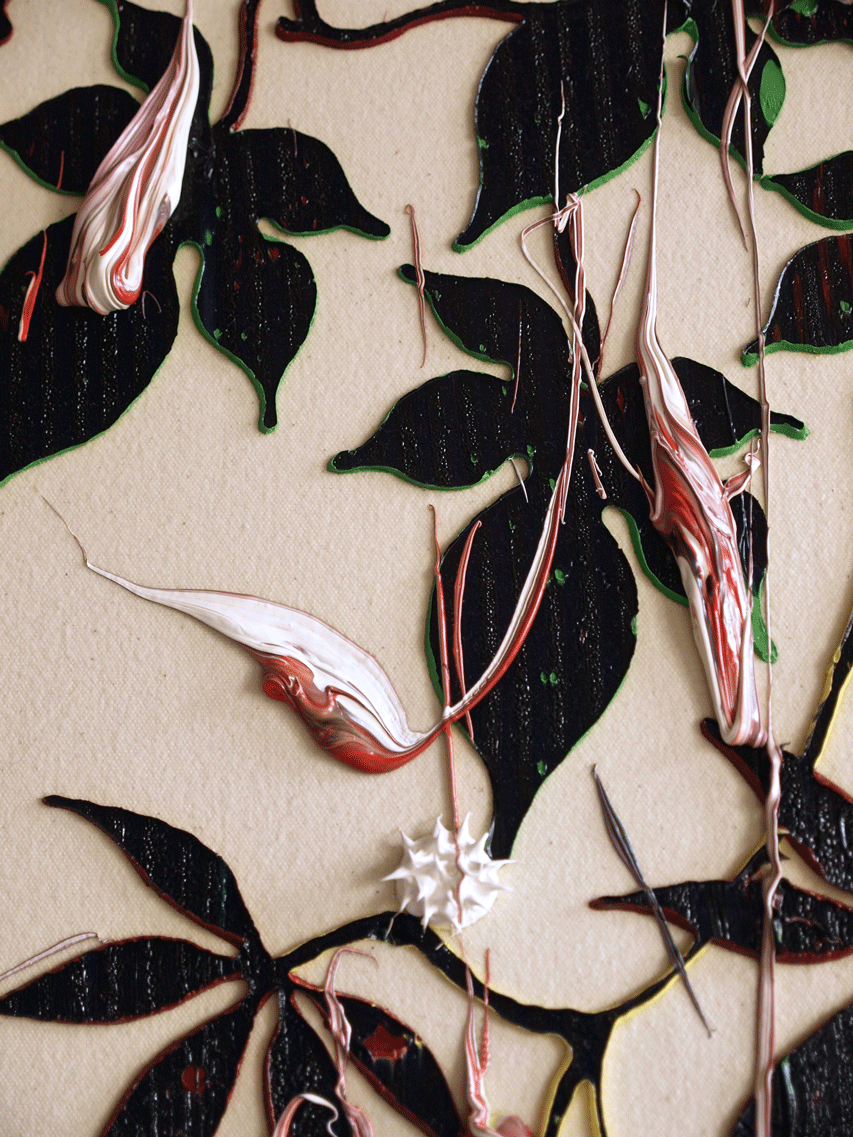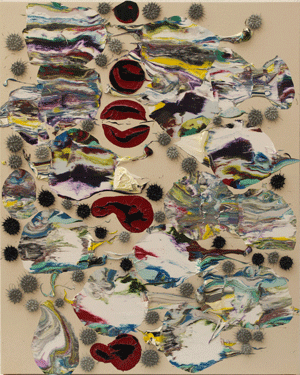April 29, 2016
April 25, 2016
Everything is Everything
Back in February of this year, Lily Lampe wrote a very interesting article for the Brooklyn Rail about painting and the "painterly". Intelligent and interesting, the article is a tour de force. She had compared and contrasted three recent exhibitions about painting, leveraging Clement Greenberg in the process. Titled "Painter-painter," and the Lingering Specter of Greenberg, Lampe slams MoMA's Forever Now by measuring it against LACMA's Variations. She then summons an analysis of the Walker Center exhibition "Painter-Painter" as a cautionary tale of what not to do to escape the dead end of Forever Now, as she seems to characterize the NY show.
Reading the article required some patience on my part. Lampe definitely is not a fan of artists who are particularly focused on the realm of painting. The first paragraph began with a dismal portrayal of the painter's painter. She rendered this kind of artist up front as a boor, unintelligent and rude. Later in the piece, the painter's painter is portrayed by Lampe as a psychological basket case: neurotic, irrationally obsessed, narcissistic, anxious, depressed, confused. Her straw man frames an excellent comparison and contrast of the three shows mentioned above. Beating up her puppet antagonist in the process, she beats out a picture of the relationship between painting and all media that is not painting.
Lampe seems to want to eat her cake and eat it too. While she says up front that she is concerned for painting's feudal, fractured state, she ends by championing "painting" by other means. Greenberg is at first an archaic throwback to medium specific fundamentalism, but later he is a righteous crusader against academicism and defender of media sovereignty. Her essay rails against painting-qua-painting and miraculously transforms from paragraph to paragraph into a liberation of the "painterly" from paint itself. This is after all, a familiar desire in our plural age, quantum-marked as we are by Schrödinger's Cat, Heisenberg and em drives. But such simultaneity actually exists in the infinitely tiny spaces between quarks and not so much in the larger dimensions of quotidian life where the cat has already been revealed to be alive or dead. In our gross world, both/and is fugitive and rapidly collapses into either/or.
It is as if alt-media envies and thus desires to steal that particular quality previously attributed only to painting: that of facture itself. A video installation could be called "painterly" indeed. Why not? There's no problem at all in an attenuated world of ideas where hyperbole and artifice has license for conveyance. But such a compliment inadvertently reveals an awareness of a poverty within the attributed medium: that it apparently needs to borrow -or steal- the characteristics of another media in order to be seen. Do you smell insecurity and envy? Video, performance, installation, all other media have fine, even marvelous domains of their own that are quite sufficient unto themselves. All you have to do is to tune into their own media specificity.
The thing is, the picture that Lampe finally rendered is a familiar one to anyone in the art world who has been paying attention for the past sixty years. Painting took a fall at the dawn of the 60's, and immediately there was a bloom of alternative media (alt-media) in profusion. Before the 70's, painting was officially declared dead, and generations of painters dutifully painted in a variety of ways that acknowledged the death certificate. For six decades, alt-media had the spotlight, the full spectrum institutions supported this enthusiastically. So as good as Lampe's analysis is, her two part conclusion finally turns out to be all too familiar: 1) liberate the "painterly" from painting and gift it to alt-media, and 2) painting can only proceed by any another means other than using paint.
(Below the fold, Lampe's article, bolded and overwritten with my notes in red.)
"Painter-painter," and the Lingering Specter of Greenbergby Lilly Lampe
At an art auction a few years ago, I overheard a conversation that unsettled my sense of painting in a way that I'm still trying to fully understand. The auction was a fundraiser for a local art nonprofit and the mood was sour. The artists clung to the walls and their drinks, grumbling about the measly number of comped drink tickets, the price-slashing they foresaw for their work, and the various iniquities of fundraisers, which ask artists to give work for pennies on the dollar. A young couple, both painters who had gone to top art schools, debated the merits of the other canvases in the room. "What is this shit?" asked one, referring to a large abstract work on paper, featuring spray paint and trompe l'œil effects atop negative space. "It's not shit!" exclaimed the other, who was better acquainted with the artist behind the work in question. "_____ 's work is different than ours. We're painter-painters, he's not," she explained. "'Painter-painter?'" I asked myself, "Not 'painter's painter?'" I wanted to know more, but the couple had already changed topic. "This whole thing is shit," snarled the first speaker, already several drinks in. "The work is shit, and so is this party." With that, he hocked the phlegm in his throat and spat onto the gallery floor. Gesture aside, I had to agree. The party had turned and it was time to leave.
Since then, the seemingly innocuous phrase "painter-painter" has stuck in my head, only to reemerge every time I see an article that questions the vitality of painting as a genre. This is not one of those articles. My concern is not for painting's health, but for its fractured state. The many styles of painting have split off into what exists today as feudal territories, where straying comes at the risk of being booted from the group. The ghost of Greenberg looms large.
After the creation of a straw man of painting, the author disingenuously claims to be concerned about the schizoid fiefdoms of painting, dropping a hint of Greenberg as the cause...
Last year, two major exhibitions of painting further complicated these questions. One was the largely reviled The Forever Now: Contemporary Painting in an Atemporal World at MoMA; the other was the stunning, yet seemingly ignoredVariations: Conversations in and Around Abstract Painting at LACMA. As the informed reader already knows, Forever Now was prominently, repeatedly, and mostly negatively reviewed in what felt like every periodical--arts or otherwise. Barbara Rose likened it to a "mosh pit at a provincial art fair."1 Christian Viveros-Fauné wrote in The Village Voice that it "sucked."2 The New York Times, the New Yorker, Frieze,the Nation, the Guardian, and ARTNews, among others, all had their go at the divisive painting show. In contrast, most readers may have never heard of Variations. The LACMA exhibitiongarnered scant blurbs that merely stated its existence and it was reviewed, positively, only twice, in Artforum and in something called Entertainment Voice. The exhibitions were roughly contemporaneous (The Forever Now ran from December 14, 2014 to April 5, 2015;Variations,August 24, 2014 through March 22, 2015), organized by two of this country's biggest art museums and, what's more, had similar checklists. Of the thirty artists in Variations and seventeen in The Forever Now, there were seven overlaps, not an insignificant number.
The gulf in critical attention between these two exhibitions is striking enough to merit its own article tackling the imbalances in arts journalism in this country. Some imbalance is due to historical weight--The Forever Now was MoMA's first painting show in thirty years and MoMA, no matter what criticisms are levied at it, is one of the most influential museums in this country, if not the world. Also skewing critical attention is the fact of location; if a publication isn't based in New York, it has a correspondent or editor there, whereas Los Angeles is simply not a hub for arts writing in the same way. Though smaller publications burble up in far-flung locales (mostly non-profit publications with a heavily localized audience), national conversations between art and art-making are seemingly anathema to the slant of art publications today, to the disservice of artists, readers, and the mechanism of art history. I hope this piece will call attention to these disparities while providing the currently lacking comparison between The Forever Now andVariations as exhibitions, because in this comparison I've found a key to unraveling the mystery of "painter-painter" and its implications for painting today.
To begin, it's necessary to indulge a brief summary of these exhibitions and where they went wrong and right. The Forever Now's flaws can be described succinctly; it was a conservative showing of poorly chosen works by mostly good painters, loosely strung together by a thin curatorial premise. Curated by Laura Hoptman around an idea of "atemporality" in order to address a supposedly free condition in which painters could pull styles and motifs from traditions potentially across the span of civilization, the references felt stiltedly 20th century. Critics immediately recognized the influence of Gerhard Richter, Ellsworth Kelly, Paul Klee, Cy Twombly, and others in the works of Julie Mehretu, Matt Connors, Michaela Eichwald, and others in the exhibition. If these artists were privy to such referential liberties, why were the historical nods so recent, and so Western?
As to the artworks themselves, as others have noted, many were weak works by strong artists, made, in my opinion, less effective by repetition. The seventeen-artist show contained over eighty artworks, each artist represented by a group of works from a single series, as if no individual work were convincing enough on its own. A group of portraits by Nicole Eisenman, for example, came across as rather middling despite the artist's otherwise sizeable intrigue, particularly because, at the time, there was a much better painting by Eisenman up the road in a Seder-themed exhibition at the Jewish Museum. But even powerfully evocative works like Rashid Johnson's Cosmic Slop series, a tangle of deep lines carved into black soap and wax, were rendered mute in The Forever Now. If the mark of a well-curated group show is the elevation of its individual pieces, The Forever Now achieved the opposite; not only was the sum less than its parts, the exhibition diminished the effect of each artist's work.
Moreover, the aligning feature of The Forever Now was a particular idea of medium specificity in painting, barely evolved since Clement Greenberg. The stretcher dominated, whether exposed in the sculptural paintings of Dianna Molzan, where the canvas was shredded into grids or hung in soft arcs that exposed the wooden frame; or the steel armature of Kerstin Brätsch's Sigi's Erben (Agate Psychics) (2012), which supplanted the stretcher only as surrogate. All around, canvas and panel dominated; where it didn't, as with the loose, unstretched and sometimes floor-strewn works of Oscar Murillo, its absence only served to emphasize the stretched canvases everywhere else.
The other major statement in the exhibition was that of the gestural mark, seen in Joe Bradley's love-'em-or-hate-'em grease-pencil on canvas works, Johnson's carvings, Mehretu's ink-and-paint Twombly-esque scribbles, and all the other works that used paint. The moves made in this atemporal "new" painting seemed remarkably close to the painterly mark-making on canvas of older styles. This wasn't atemporal painting; it was old business masquerading as new.
Perhaps the most damning criticism was that The Forever Now was collector-bait, due to the show's inclusion of market wunderkinds like Murillo, whose work, while enthusiastically collected, gathers mostly unfavorable mentions from critics. And in fact, many critics concluded after The Forever Now that, according to MoMA, painting's defining characteristics seem to be that it is big and expensive. Compounding these accusations was the glaring fact that of the nearly ninety works in the exhibition, a scant seven were at the time owned by or promised to MoMA. By the end of the year, works by Eisenman and Mehretu, which appeared in The Forever Now,were added to the museum's collection, bumping the number up to nine and growing. With these facts in mind, The Forever Now looks less like a compelling show of contemporary painting and more like a collectors' wish-list to Santa Klaus Biesenbach.
Variations was, in many ways, the corrective to the missteps of The Forever Now. Featuring half as many works by twice as many artists,Variations felt simultaneously more expansive in scope than The Forever Now and compellingly loose in its definition of painting. The oldest works, a 1976 lithograph by Howardena Pindell and a 1988 Richter painting, worked to firmly establish an immediately accessible lineage--and one that wasn't looking only at white males--in contrast to the relatively shallow depth of The Forever Now, whose oldest works dated to 2006. Most exciting, from those initial flag posts, the exhibition immediately bloomed out into sculpture, video, and assemblage in ways that felt both radical and representative of the most interesting moves happening today. Rachel Lachowicz's 1992 Lipstick Urinals, with their greasy, densely pigmented patina, brought a feminist edge in addition to unconventional materials. Lachowicz's Cell: Interlocking Construction (2010), a pleasing array of blue pigment within stacked irregularly shaped Plexiglas boxes wrestled Cubist forms out of their 2-D sepia purgatory. Other L.A. inclusions, like Mark Bradford and Sterling Ruby (wave-end paper paintings and spray-painted plinths with ceramics and canvases, respectively) felt significant and necessary. Negating accusations of West-Coast favoritism were works by Christopher Wool, Theaster Gates, and Jennie C. Jones, the latter of whose acoustic panels on canvas made a loud impression without making a sound.
It's also worth mentioning that almost ninety percent of the works in Variationsare in or promised to LACMA's permanent collection, suggesting LACMA holds better contemporary painting than MoMA wishes it had. And indeed, the seven artists presented in both exhibitions were shown to better effect at LACMA. Two paintings by Amy Sillman in Variations, for example,demonstrated greater expressive range than the four at MoMA. Fresh comparisons helped too; a single-shaped canvas work by Molzan had greater subtlety (compared to the five in The Forever Now) next to Lisa Williamson's painted steel Long Pants (2013). Mark Grotjahn, whose riotous tunnels of color still dazzled at MoMA, was shown to be just as effective with sparser painting compositions and bronze sculpture inVariations. The biggest shift was in the presence of Rashid Johnson. At MoMA, his soap-and-wax works were just another nod towards the gestural, at LACMA a mixed-media installation titled Four for the Talking Cure (2012) was given a central place, both physically and metaphorically. The brief exhibition text notedFour for the Talking Cure as embodying the organizing principle of the show. Composed of four zebra-skin-upholstered benches, spider-plant-like fauna, and a hollow diamond-like sculpture at its apex, among other items, the work's only overt nod to painting was the graffiti-like scratches and sprays at its base. The text read, "The title references a Freudian term for the fundamental nature of psychoanalysis; here we suggest a place for the analysis of painting--a conversation in and around abstraction." While Four for the Talking Cure was cordoned off from would-be recliners in the exhibition, the idea of psychoanalyzing painting--not merely taking a Freudian approach to regarding an artwork but actually treating painting like a patient--was a seductive one, suggesting all of painting's crises were neuroses, and could be disbanded with some time on a therapist's couch.
9 paragraphs of good comparison and contrast of Forever Now and Variations
Is the supposed crisis in painting a product of the medium's own neurosis? Perhaps it isn't that painting is dead but that, like many of us, it suffers from anxiety about death? Maybe painting is depressed, a sentiment I dare say many critics would validate, or narcissistic (undeniably), or irrationally obsessed with the threat of other mediums. Obsession of some sort seems the most likely diagnosis, with the result being compulsive inward-looking as well as an unhealthy fixation on what painting or sculpture or video might be doing.
projection: it's as if the death of painting narrative is painting's compulsive neurotic preoccupation...
The narcissistic self-obsession of painting was certainly on view in The Forever Now. The exhibition seemed particularly hung up on three primary qualities of painting today: possession of a stretcher or the illusion or reference to one, use of canvas or other painting surfaces, and the gestural mark, something akin to a painterly brushstroke. This dogged insistence on the traditional structure of painting--done on a panel, canvas, or linen, and pulled over stretcher bars--and expressive mark-making done by hand is, minus a dogmatic insistence on the use of paint itself, hardly a step removed from Greenberg's idea of medium specificity. Both Lowry and Hoptman described the artists in The Forever Now as traditionalists in so many words. Lowry wrote the artists "made their work in the most traditional manner--using paint and brushes on canvas."3 Hoptman elided her choices as "practitioners of painting qua painting," perhaps synonymous with the elusive moniker of "painter-painter."4 If MoMA is correct, the move towards the flatness that Greenberg described is not only alive, but dominant, and while medium specificity seems to have gotten away from necessarily involving paint on canvas, the moves made by Bradley, Johnson, and Mehretu, with a grease stick, carved soap, and ink, respectively, substitute painterly mark-making without using a drop of paint.
Strange, that medium specificity is confused with the components of support of painting and not with paint itself... and instead, Greenbergian medium specificity is located in gestural mark making... gestural mark making by any means other than that utilizing liquid paint.
The continued insistence on medium-specificity should have been reassuring of painting's health; instead, it was troubling. Since Forever Now hinges on Greenbergian medium-specificity, it's only logical to turn to Greenberg to see where it fails. In "Towards a Newer Laocoön," Greenberg explicated the avant-garde break in painting towards flatness and purity in form, away from bourgeois fixations on subject matter.5 Forever Now fits the bill, but perhaps too well. Greenberg also described the avant-garde as a having historical imperative to evolve, meaning the avant-garde in painting today cannot be that of Greenberg, but must present a dramatic evolution. The Forever Now--far from presenting an evolutionary leap--seems barely evolved. Besides, according to Greenberg, the avant-garde performs in opposition to bourgeois society--if the critics were right, MoMA with The Forever Now played only to the elites who determine (and inflate) its values.
For all the weaknesses of The Forever Now, however, it presents a good example of where "painter-painter" stands. Let me stress that this does not limit "painter-painter" (or its opposite) to existence as a derogatory phrase; it's just a shame for painter-painters that MoMA presented this kind of work in such poor fashion.
I don't think that FN is more of an indication of the marketplace than for where painting qua painting stands...
Enter, the third exhibition to be compared with FN and Variations:
MoMA isn't the only major institution to misrepresent "painter-painters." A third painting exhibition clarifies what "painter-painter" isn't. In 2013, I saw the Walker Art Center's show Painter Painter which, though in name consistent with my premise, was assuredly not "painter-painter." The Walker's first painting show in twelve years (it seems the infrequency of group shows on painting must be mentioned by guilty institutions), Painter Painter included work by Matt Connors (also in Forever Now), Dianna Molzan (in Forever Now and Variations), and Alex Olson (Variations), indicating these exhibitions on painting really are circling around the same pool of artists. The result differed dramatically from the viewpoints presented by the other exhibitions I've discussed. Painter Painter was not, as we might surmise, a move towards a reemphasis of painting as a medium, but in fact a blurring of mediums. The accompanying text stated that the exhibition "posits abstract painting today as a means, not an end." Indeed, painting felt like a material in this exhibition, one to be used towards the creation of sculpture. Paintings were shredded, piled, and strewn between folding chairs in Molly Zuckerman-Hartung's The Failure of Contingency (2012); Rosy Keyser hammered sheets of corrugated steel and polycarbonate on a wooden frame in Big Sugar Sea Wall (2012). This is not a negative judgment of the works in this exhibition, but Painter Painter fell victim to what Greenberg described as academicism: "that particular widespread form of artistic dishonesty which consists in the attempt to escape of the problems of the medium of one art by taking refuge in the effects of another."6
At times, Greenberg is critiqued as a figure of ridicule, but this time, he is cited to authoritatively support the critique of academicism, that painting was used merely as a means to an end outside of painting.
"Painter-painter" is not a phrase that undermines painting's autonomy; rather, it qualifies it. "Painter-painter" is a doubling-down on the medium, allowing for gestural marks to substitute for paint, steel bars to substitute for stretcher. Whatever the substitution, the elements of stretcher, canvas, and paint remain in some form or are accentuated even in their absence. The works in The Forever Now exemplify this perspective, to unfortunate ends.
Perhaps it's a senseless act to imagine what might have been with Forever Now, and it is possible that, as with Dorothy Miller's infamous--and similarly reviled--umpteen Sixteen Americans (1959) MoMA exhibitions, the curator will have the last laugh and Forever Now will be canonized as an Influential Exhibition. The thought isn't actually so dreadful--history shows it's happened before--but the idea that Variations will disappear is upsetting because it felt so rich with ideas, and so right. The lack of a named curator--exhibition information simply stated thatVariations was organized by LACMA--is curious, and perhaps attributes to the anonymity of the exhibition. Perhaps its obscurity is lack of lexicon. Variations: Conversations in and Around Abstract Painting offers nothing so immediately catchy as atemporality, nor as fun to combat. A way to discuss the moves made in Variations is desired, one that can be used to gauge painting's direction like the poles of a weathervane.
If "painter-painter," seen at its dullest effects in Forever Now, reinforces the three tenets of the medium, what to call the other option presented by Variations, which acts less like "painter-painter's" opposite than its alternative? In Variations, Diana Thater's video, Female Peregrine Falcon (Brook) (2012), was as valid a painting as Analia Saban's marble on linen Kohler 5391 Kitchen Sink (2013), or A. K. Burns'sTouch Parade (2011), a five-channel video installation with each screen showing a body engaged in various tactile gestures. This expanded field of abstraction not only incorporates other mediums, but often does away with what Greenberg would call painting altogether, with works lacking the formerly holy trinity of canvas, stretcher armature, and paint.
After Sculpture in the Expanded Field: Now, Painting in the Expanded Field
Instead of painting (& its' 3 tenants) being exploited as a means to an end (other media) in Painter-Painter... the reverse is claimed to have occurred in Variations: that other media could claim a characteristic specific to painting (the painterliness of painting, its' facture) as its' very own.Permutations:
- Painting used as a means to an end in service to alt-media (paint +/-support as mere material for alt- media)
- Alt-media using paintings' attributes as a means to an end. ("painterliness" as a qualifier in non-painting contexts)
- Painting using alt-media attributes as a means to an end (ex: Richter's photographic painting)
- The means serving ends, specifically within each media's domainFor Lessing and Greenberg, the resort to medium specificity is an attempt to orient a lost art form. In architecture, this is called the nature of materials, Louis Kahn famously asked a brick what it wanted to be ('in compression'). This is a compass, a map, a method of rescue. The premise of being adrift or astray remains, and this is indicated by the poor performance of the artist in their medium, Lessing and Greenberg were responding to perceived flagging and failing art forms. The alternative worldview to theirs insists that becoming "lost" is the objective after all. Poor performance is redefined as a desired end. Being lost is preferred to the bondage or servility of being found, of conforming to a larger whole, of fitting in.
In "Towards a Newer Laocoön," Greenberg used the word "variant" repeatedly but without great significance to describe changes in direction in avant-garde painting. Yet "variant" contains great possibilities for elucidating the moves happening in painting today. In its adjectival form, "variant" means tending to change, not agreeing or conforming, varying from the standard. Painting has never had the possibilities for change that it has today, with the ability to not only borrow from but subsume itself into the widening breadth of mediums available for art making.
There's historical precedent for this shift. In the '70s, artists like Sol LeWitt and On Kawara began to co-opt painting in works that, while technically painting, were primarily conceptual and thus transcended physical categorization. For the first time, artwork could exist as an abstraction in its purest form, an idea without materiality that didn't even need to be realized in order to exist. This planted the seed of revolt. From there, two divergent stories can be told of painting. The first falls under "painter-painter" concerns. For Greenberg, purity in art consisted in the complacent acceptance of the limitations of the medium of a specific art, and this has continued as a through line in painting. The major moves in what we would traditionally accept as painting have retained Greenberg's medium-specific trinity, but have all been image-oriented; from David Salle and Julian Schnabel's emphasis on representation in the '80s to the reinvigoration of realism in the '90s in the works of Elizabeth Peyton and others. Subject-matter crept back in a dominant way, perhaps a regressive return in Greenberg's eyes but one that redoubled emphases on manifesting the physical aspects of painting. In the 2000s, painting, like everything else, got big, but it didn't change much structurally, which is certainly reflected in The Forever Now.
Sol Lewitt didn't plant the seed of revolt. His oeuvre was the fruition of a tree planted long before (the Pop turn away from AbEx, Rauschenberg's " erased DeKooning"). With roots trailing back past Duchamp and Jarry to Cervantes and probably even further beyond into the past, the philosophy undergirding postmodernism is deep in the corpus of Western Civilization.
The de-materiality of art was inadvertently presaged by Greenberg. Dematerialization led to Sol LeWitt's art-as-a-set-of-instructions, a herald of the Information Age to come. Greenberg insisted on slaving the idea of art media to an antique framework concerning ideas about the dimensionality of reality, an intellectual moment of fashion that preoccupied the world in the prior century (see Flatland, 1884). By mapping the assumed one, two, three and four dimensions of reality to poetry, painting, sculpture and architecture (or cinema?); painting's destiny was presumed to be flat (as fiercely as abstraction tended toward the Platonic), its material irresistibly became a non-issue. This was an anticipation of the jpegs and gifs to come.
Greenberg set painting on a course towards flatland and the frontier of flatness is what lies past zero. This was an anticipation and fulfillment of painting's demise. Painting had to die for other media to live in our postmodern epoch. Like Jesus and Buddha ascending to heaven, painting died in the material body, its presence lingering in spirit only, embodied only with a set of quotations, the " painterly", a halo, laurels accessible to any and all media that needs to be seen in the light of an immense legacy.
The alternate recent history is that of other mediums creeping in while allowing painting to remain distinctly painting. It could be argued that the luscious, psychologically haunting paintings of Peter Doig, Marlene Dumas, and Luc Tuymans are part of the shift away from medium specificity, despite being plainly and structurally paintings comprising the three crucial elements. Their works, while highly representational, are distorted in ways that both reflect and deviate from their consistent use of photographic and cinematic source material (Richter and Sigmar Polke should of course be considered in this as well). The representational aspects then are mediated by these artist's explicit use of and reference to these other mediums. The true image presented in these paintings is not the content of the original photograph or film, but the photograph or film itself.
The quiet eruption of photography into the best painting of the 20th century's final decades created an opening for painting to adapt other mediums into itself, a vice versa of the moves made by Conceptual art. Medium limitations have lost their stranglehold on what a work of art could be. The avant-garde is no longer about surrendering to medium, but conquering it. In the works of Chris Ofili, painting is combined with sculptural elements like unconventional plinths to great and influential effect. If an On Kawara painting can be something other than a painting, then why can't an A. K. Burns five-channel video installation be a painting? The ability to differentiate these moves is no longer the credence of materiality; instead, the ideas behind or overt in the artwork have overridden its material constraints. An artist's intention isn't the defining attribute; this move can happen in the perception of the beholder, be it artist, museum-goer, or a very perceptive team of curators.
Dung plinths make an otherwise blasé painting better, serial sign paintings are more than paintings, video installations are paintings... other mediums can be qualified in painterly terms and painting can be qualified in any other medium's terms... everything is everything
My earlier mention of psychoanalysis now feels like Chekhov's gun waiting to go off, with the inevitable outburst being that painting suffers from an identity crisis. There are those who might accuse painting of being "confused" or "in a phase." Yet this is far from the truth. This is less a phase than a sea change, catharsis rather than confusion. What some might approach with fear is the evolutionarily necessary next step of a once-beloved, now polarizing medium. The chance is behind us now, and there's no going back.
Looking to parallel moves in other mediums, I'd be remiss not to mention Rosalind Krauss's "Sculpture in the Expanded Field," which so elegantly broaches sculpture's shift away from the monument towards postmodern forms like land art, non-sites, etc. In painting as well, the mechanisms of postmodernism are at play, although I wouldn't risk drawing direct parallels to the sculpture-specific (taken generally of course) claims Krauss makes, nor suggest I'm doing anything as refined as her structural mapping (this fact is already clear to the reader). Nor do I wish to say painting is now also in its expanded field. Most generally, what can be said is that, as sculpture has expanded to include art activities not traditionally considered sculpture, so too has painting extended its possibilities; however, painting's expansion is the sublimation of other mediums rather than setting, incorporating sculpture, video, light, sound, and so on, in ways that retain the abstract sense of painting. The gestural brushstroke becomes an abstract act; stretcher bars are extrapolated into the edges of a flat screen television, the sides of a Plexiglas box, or four zebra-upholstered benches; a canvas surface can be a screen or the panel of an acoustic speaker; painting's flatness mimicked by marble prepared for a kitchen counter.
Mimic: a key word. Earlier, Lampe cited Greenberg's authority to condemn academicism: "that particular widespread form of artistic dishonesty which consists in the attempt to escape of the problems of the medium of one art by taking refuge in the effects of another." But in her appeal for painting's own expanded field, the "sublimation of other mediums" within painting incurs the same problem of escapism. One could say that this is perhaps in reverse terms, but even in reverse, what justice does this do to mediums other than painting, to clothe themselves in the majestic mantle of the painterly in order to qualify their existence?
Perhaps it is not so surprising that in this essay, Greenberg is at times disqualifying and other times qualifying. In the philosophy of have-your-cake-and-eat-it-too, the option of both/and is supremely seductive. It's hard to see early on, the neutralizing effects: w `31 dsaqhen everything is everything, nothing matters.
No longer is avant-garde painting about self-reflexively showing the material limitations of painting; it has ascended beyond the limitations of Greenberg's holy trinity. The material forms of painting are variable and perhaps they need not be material at all. An obsession with flatness feels far too one-sided today. What's most vibrant in today's painting is not about a break with time but a break with material, a break with two and three dimensionality into a fourth, an expansion into multiple art practices which could be called painting, and an expanded sense of genres that will be duly freeing to the rest. This is Variant Painting. Call it what you will.
- Barbara Rose, "Forever Now Tomorrow," The Brooklyn Rail (Mar. 5, 5015).
- Christian Viveros-Fauné, "Upon Reflection, MoMA's 'The Forever Now' Forever Sucks," The Village Voice (Feb. 11, 2015).
- Glenn Lowry, "Foreword," The Forever Now: Contemporary Painting in an Atemporal World, (The Museum of Modern Art, 2015) Pg. 6.
- Laura Hoptman, "Acknowledgements." The Forever Now: Contemporary Painting in an Atemporal World, (The Museum of Modern Art, 2015) Pg. 9
- Clement Greenberg, "Towards a Newer Laocoön," Partisan Review, (July - August 1940).
- Greenberg
April 16, 2016
Paintings 2015
This is a presentation of paintings from 2015. Sizes of the following images are relative.
Click on the image for enlarged images in the original blogpost of each painting.
Paintings and works on paper for 2015:

here and now life
2014
WOP 1-14
12"X10"
Oil on Paper

East of the Sun
2014
WOP 2-14
12"x10"
Oil on Paper
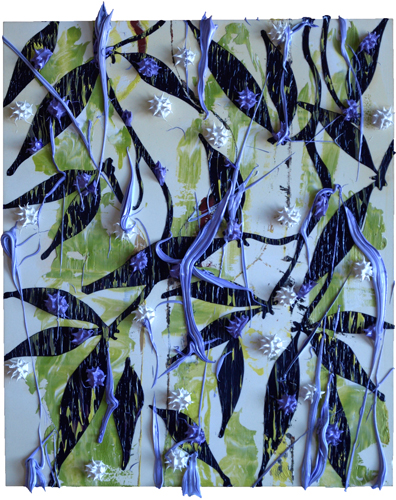
tiny moments unnoticed by most
2014
WOP 3-14
12"x10"
Oil on Paper
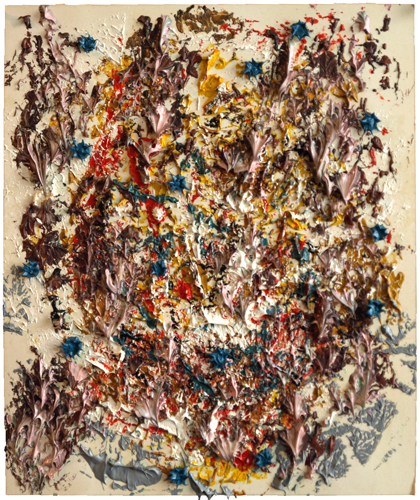
Of Course, Of Course
2014
12"x10"
Oil on Paper
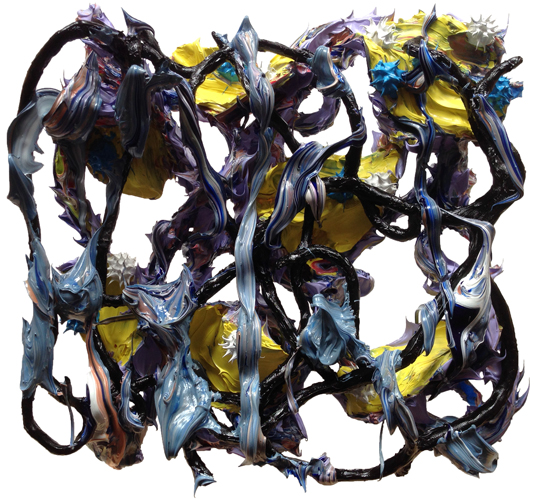
Capricho
2015
#488
10"x10"x3"
Oil on heat cured plasticine
(Note: This capricho was destroyed in shipment, alas!)
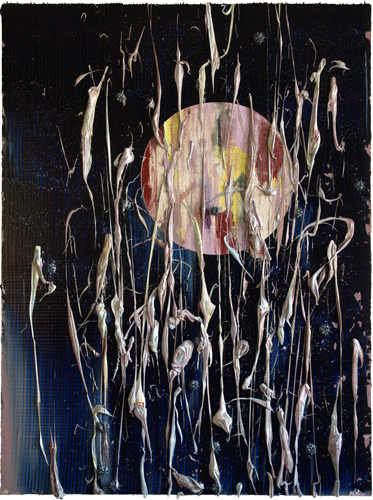
the only gesture left
2014
#482
48"x36"
Oil on Canvas on Wood Panel
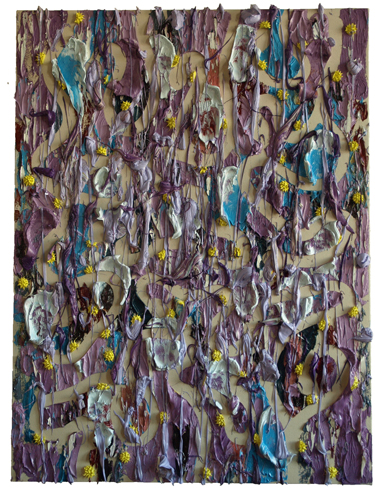
Minerva's Serpents
2015
#483
48"x36"
Oil on Canvas on Wood Panel
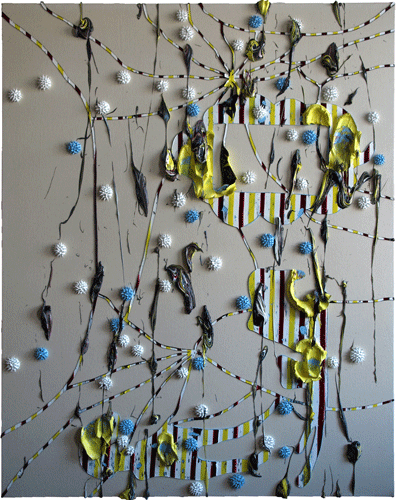
Once the mask returns...
2015
60"x48"
Oil on Canvas on Wood Panel

Paths to Veneration or Destruction
2015
#485
60"x48"
Oil on Canvas on Wood Panel
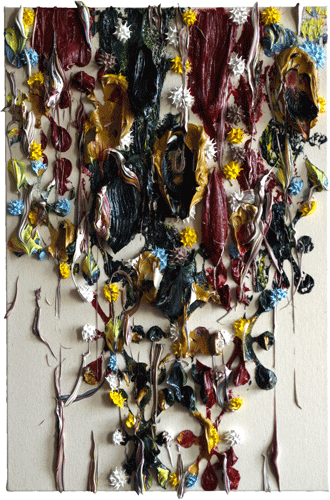
Present & Plentiful
2015
#487
30"x20"
Oil on Canvas on Wood Panel
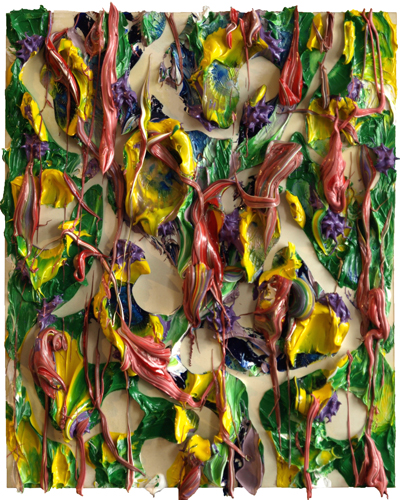
Tiny Moments
2014
WOP 5-14
Oil on Paper
12"x10"

yet still floating in the air
2015
#489
18"x12"
Oil on Canvas on Wood Panel
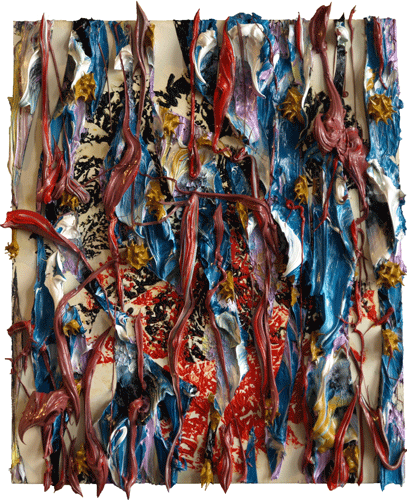
inherent, pervading
2014
WOP 6-14
12"x10"
Oil on Paper
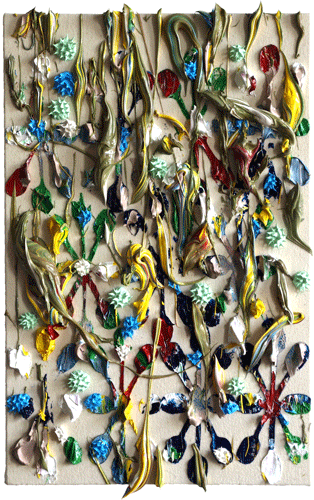
all that is permitted
2015
#490
18"x12"
Oil on Paper
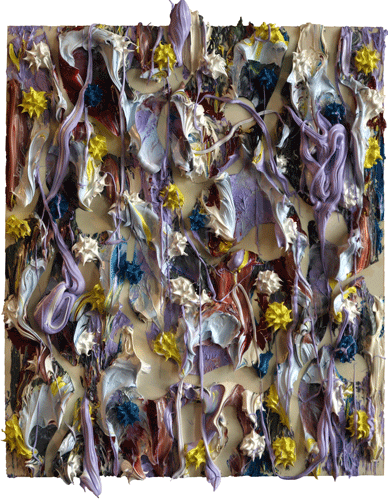
ensnarled by Minerva's serpents
2014
WOP 7-14
Oil on Paper
12"x10"
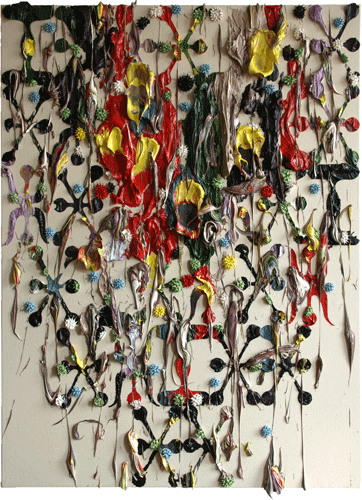
limitlessness and a strange desire
2015
#492
Oil on Canvas on Wood Panel
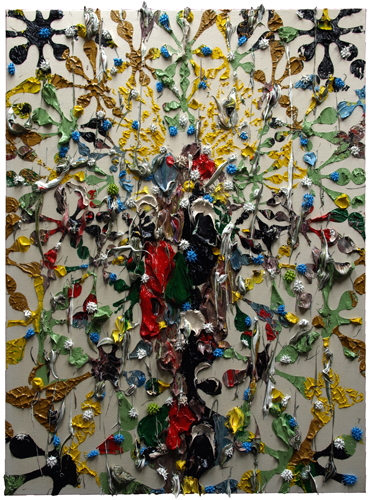
For Christ's Sake
2015
#494
60"x48"
Oil on Canvas on Wood Panel
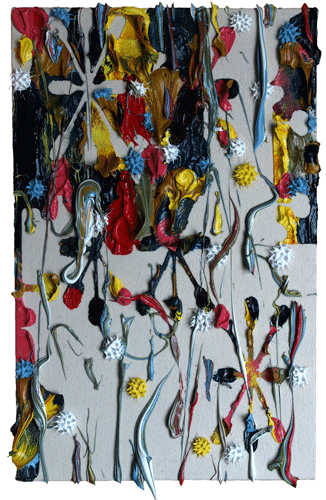
up for grabs
2015
#491
18"x12"
Oil on Canvas on Wood Panel
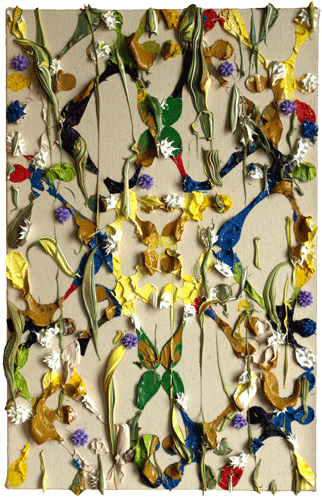
Bridge, Combat!
2015
#493
18"x12
Oil on Canvas on Wood Panel
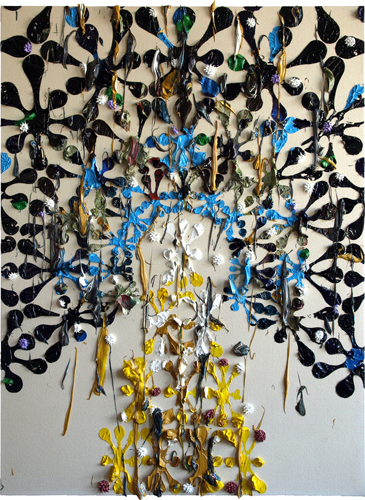
a surfeit of dimensions
2015
#495
48"x36"
Oil on Canvas on Wood Panel
a cruel exposure
2015
#496
48"x36"
Oil on Canvas on Wood Panel
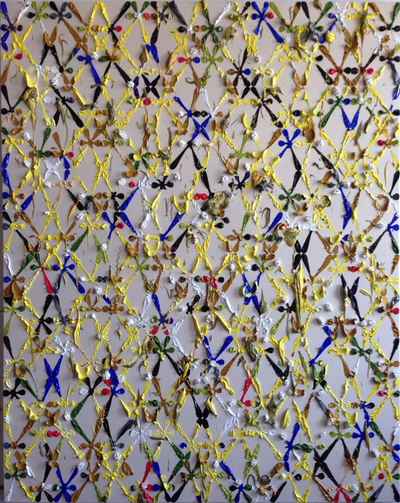
barely scratched the surface
2015
#497
60"x48"
Oil on Canvas on Wood Panel
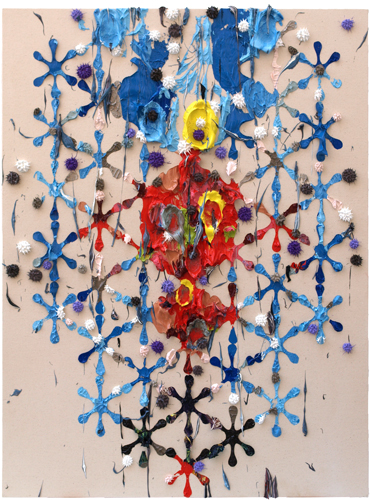
born Janus-faced as one
2015
#498
120x90cm
Oil on Canvas on Wood Panel
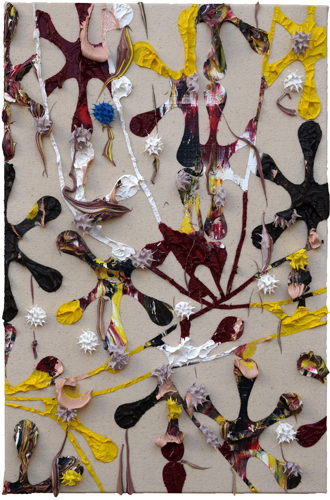
inverted and nested
2015
#499
46x30cm
Oil on Canvas on Wood Panel
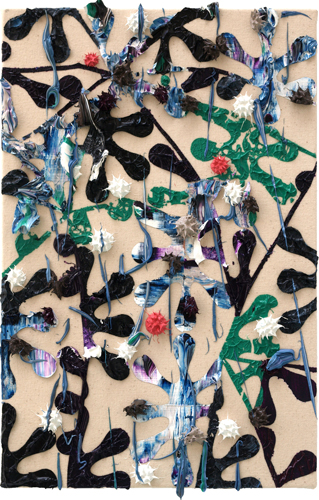
still yoked"
2015
#500
46x30cm
Oil on Canvas on Wood Panel
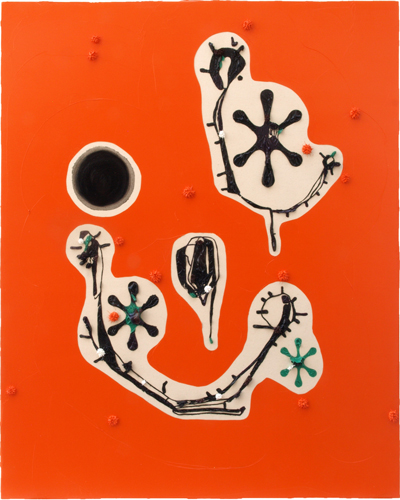
friendly, unknown or hostile
2015
#501
150x120cm
Oil on Canvas on Wood Panel

the reassuring littoral
2015
#502
150x120cm
Oil on Canvas on Wood Panel
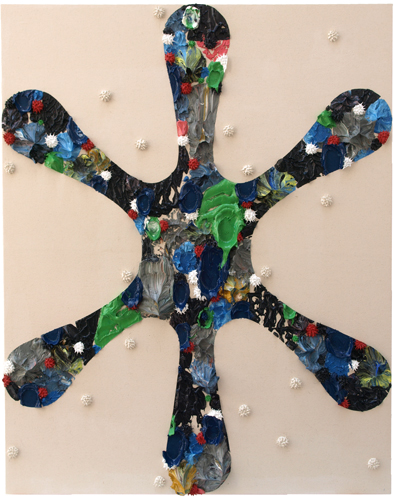
a enemigo, ni agua
2015
#503
150x120cm
Oil on Canvas on Wood Panel
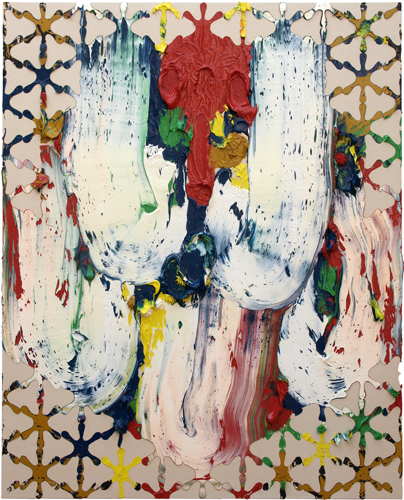
rauxa y seny
2015
#504
150x120cm
Oil on Canvas on Wood Panel
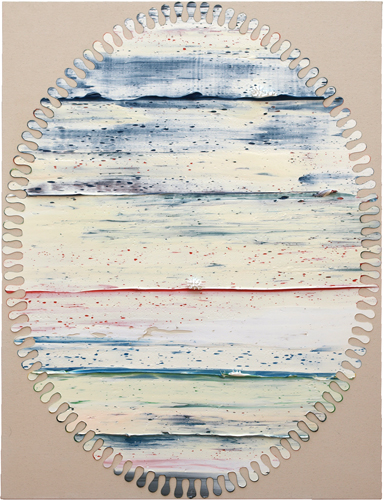
Massive
2015
#505
120x90cm
Oil on Canvas on Wood Panel
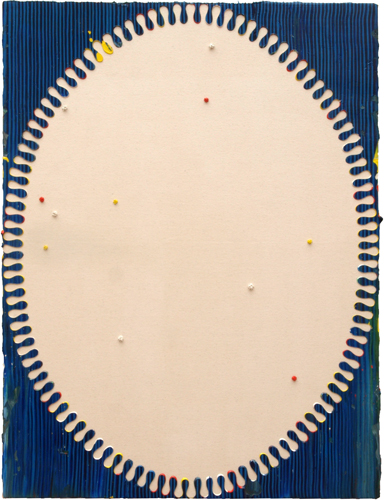
Flip
2015
#506
120x90cm
Oil on Canvas
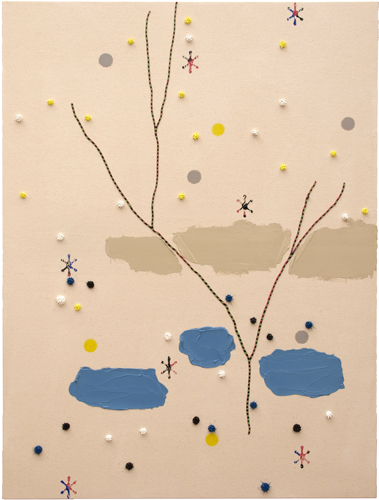
Condensate
2015
#507
92x76cm
Oil on Canvas on Wood Panel
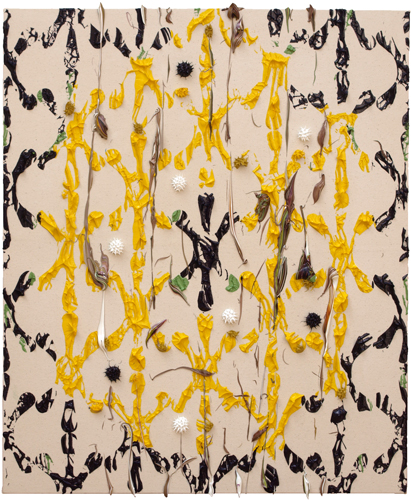
abide or endure or suffer
2015
#508
92x76cm
Oil on Canvas on Wood Panel
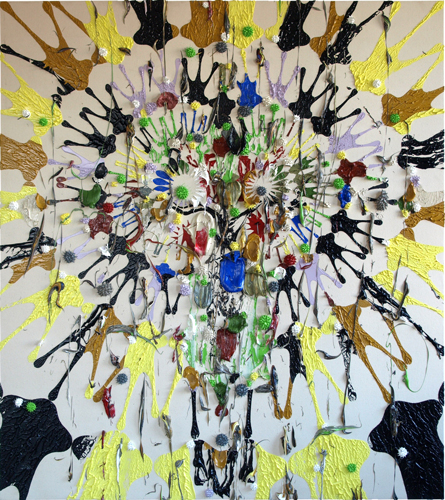
genes of our father
ww#509
2015
71"x63"
oil on canvas on Wood Panel
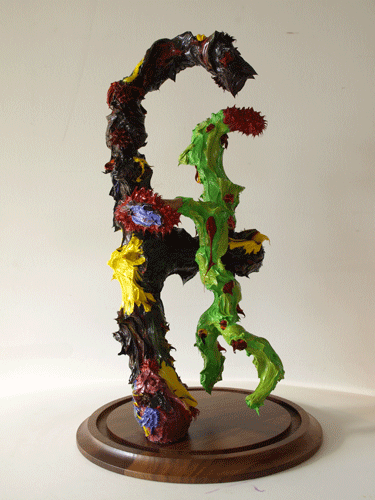
Saturnalia
2015
#510
21"x12" diameter
Oil on Wood, Glass Vitrine
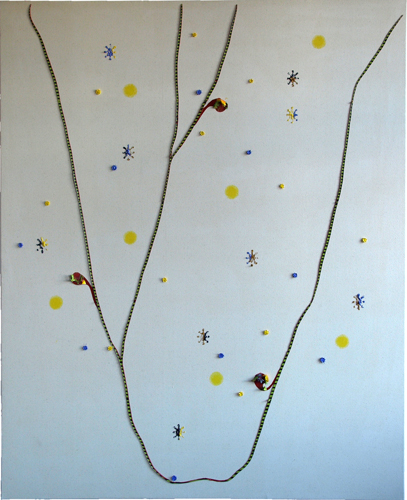
idealism of my youth
2015
#511
60"x48"
Oil on Canvas

Striving, Yearning, Struggling
2015-2016
#512
75"x30" diameter
Oil on wood
vislumbres
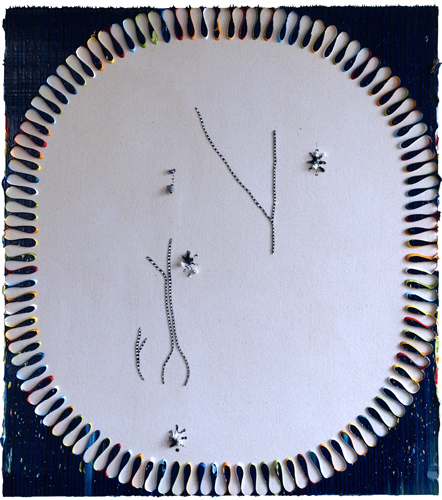
vislumbres
2016
#519
36"x32"
Oil on Canvas over Wood Panel
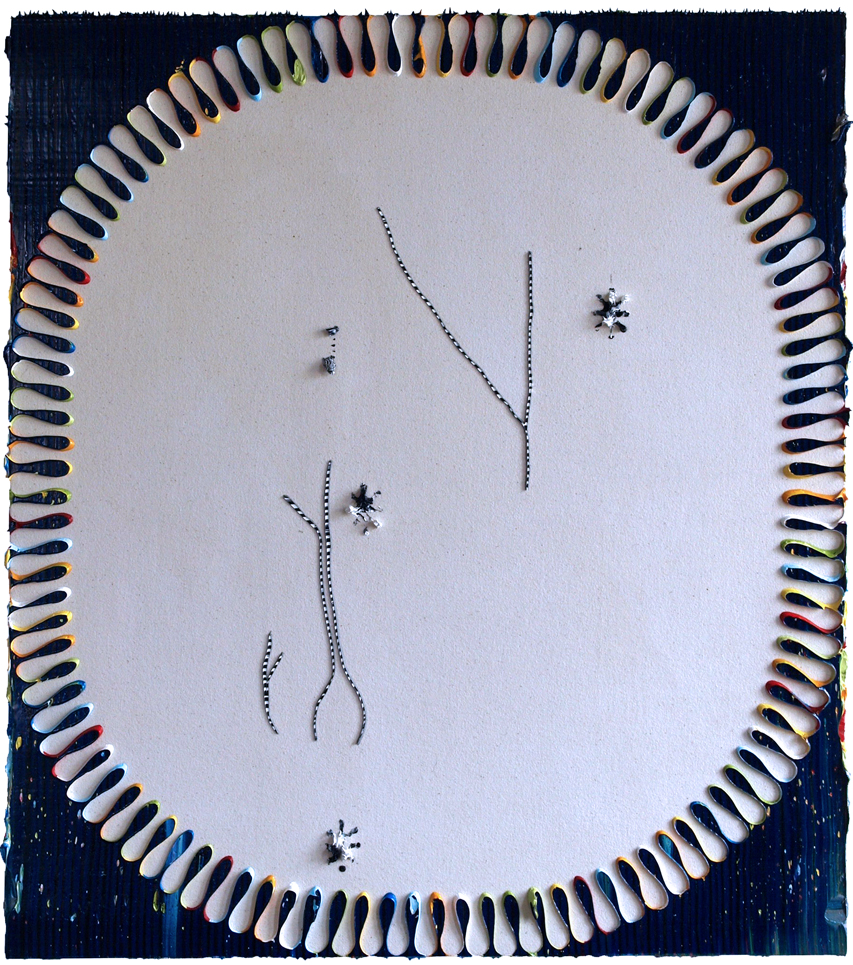
Paintings 2014
This is a presentation of paintings from 2014. Sizes of the following images are relative.
Click on the image for enlarged images in the original blogpost of each painting.
Paintings and works on paper for 2014:
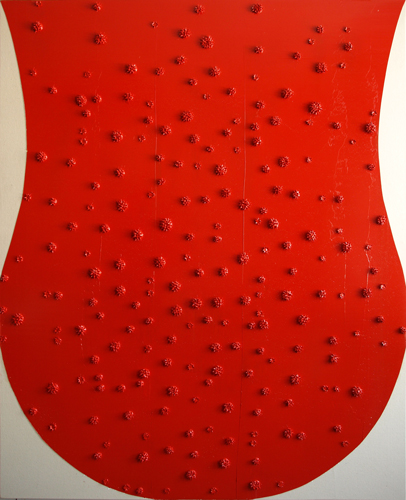
Last Full Measure
#440
2014
60"x48"
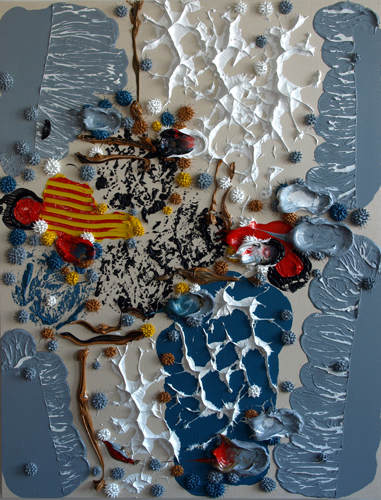
And through it all, I wonder
#441
2014
48"x36"
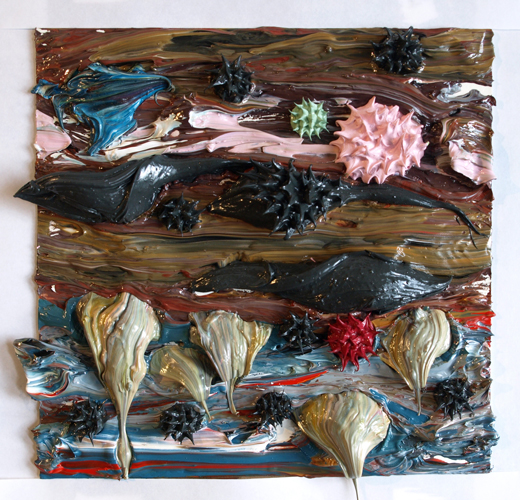
Like a Pirate
WOP 1-14
2014
10"x10"

There are always absolutes
#442
2014
48"x36"
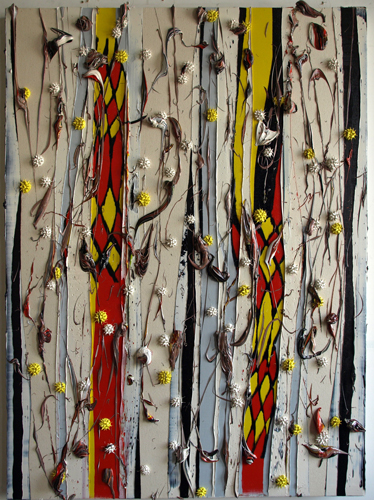
freedom... exhilaration
2014
#443
48"x36"
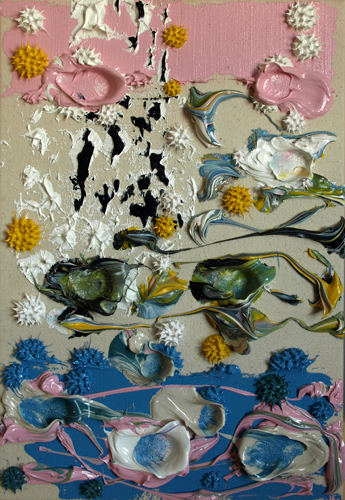
peek into the future
2014
#444
18"x12"
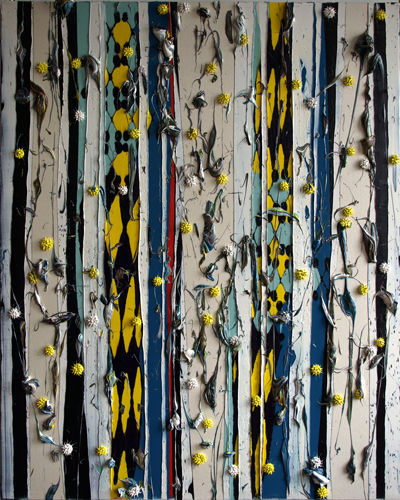
adamantine determination... unflinching testimony
2014
#445
60"x48"
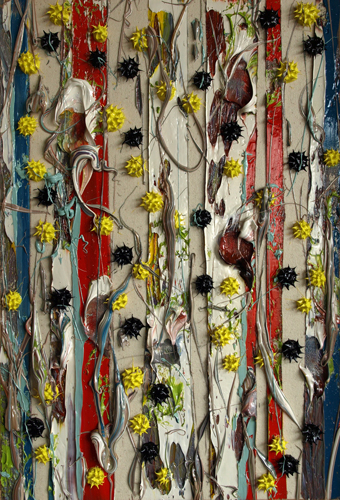
buoyantly from the depths
2014
#446
18"x12"
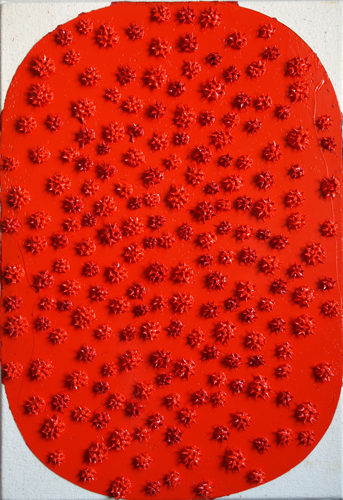
pace and time
2014
#447
18"x12"
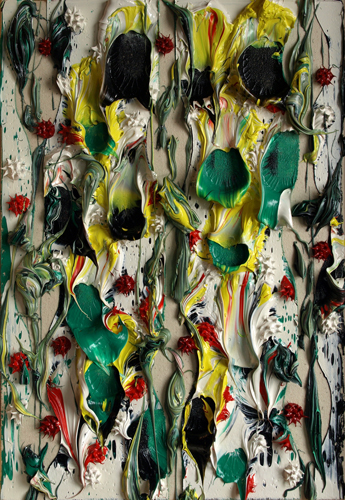
stepped back and aloft
2014
#448
18"x12"
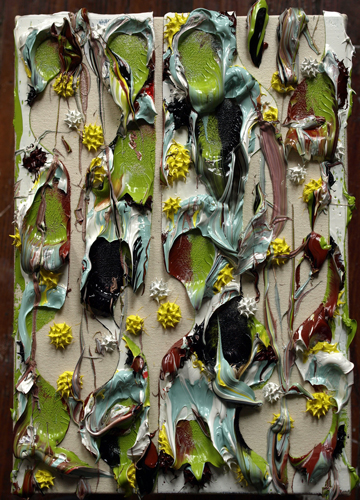
trembles and dances
2014
#449
18"x12"
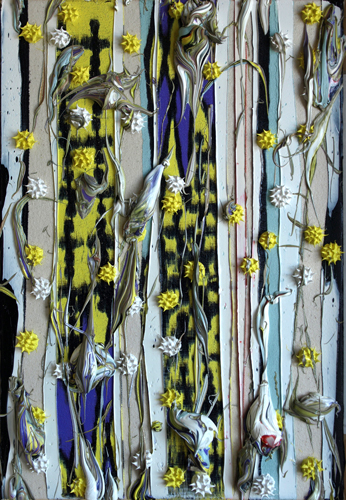
Was it Oblviion? Dissolution?
2014
#450
18"x12"

Each Direction Without End
2014
#451
18"x12"
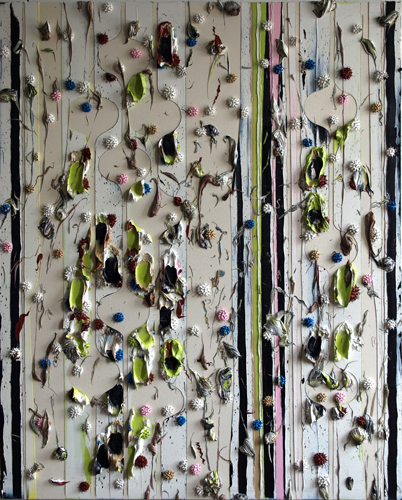
Breathing City
2014
#452
60"x48"
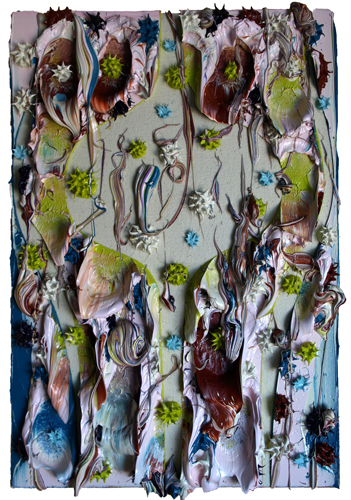
But Still, I Marvel
2014
#453
18"x12"
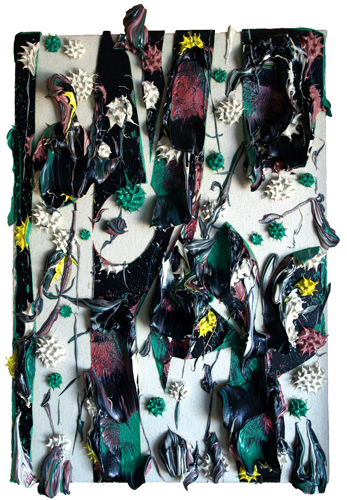
Happy to Fell Trees
2014
#454
18"x12"
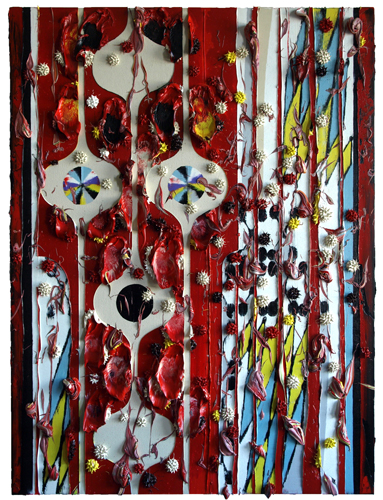
with mighty wings outspread
2014
#455
48"x36"
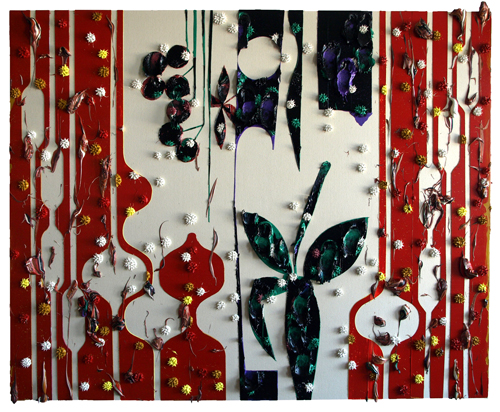
Pacific Squadron
2014
#456
48"x60"
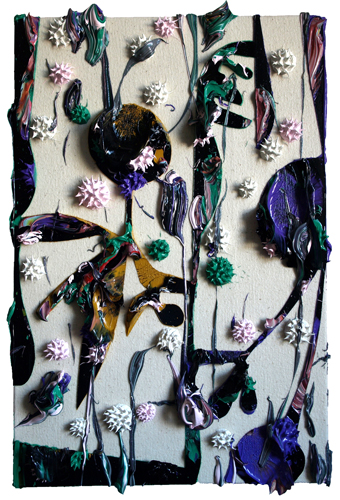
The Strong Force
2014
#458
18"x12"
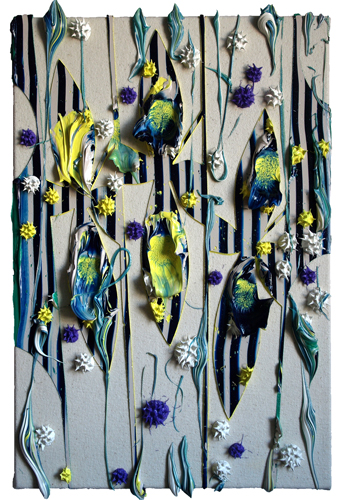
the context of aeons
2014
#458
18"x12"
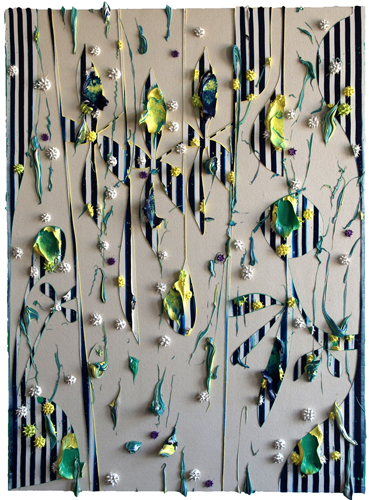
but a blink of an eye
2014
#459
40"x30"
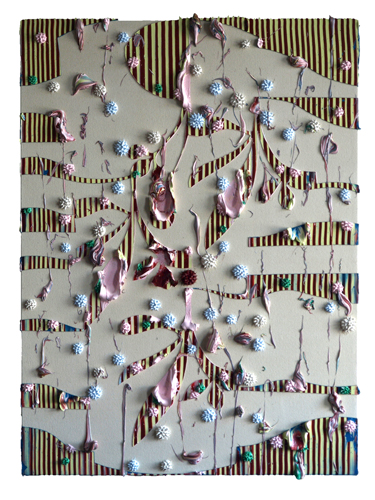
phenomenal wrinkles
2014
#460
40"x30"
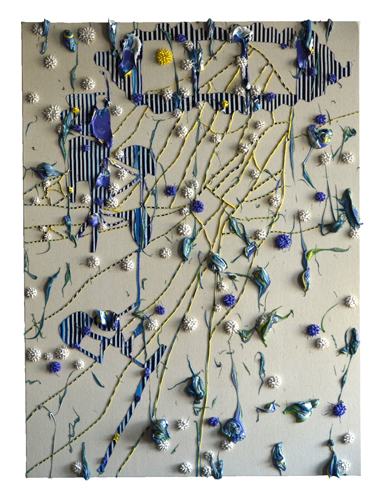
bashin' dere brainz
2014
#461
40"x30"
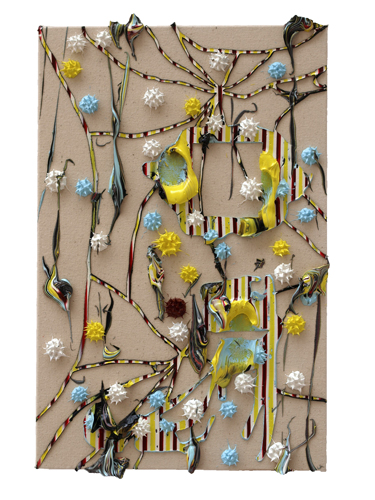
if they were meant to be
2014
#462
46 x 30cm
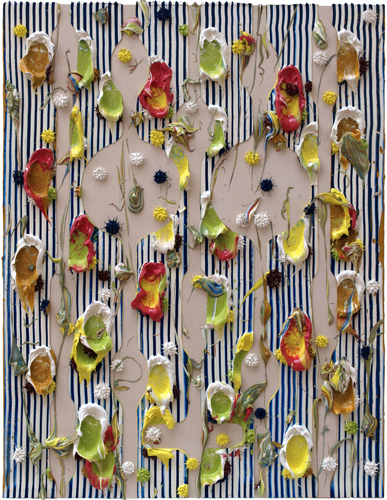
shooting for fifteen... erring at forty five
2014
#463
120 x 90 cm
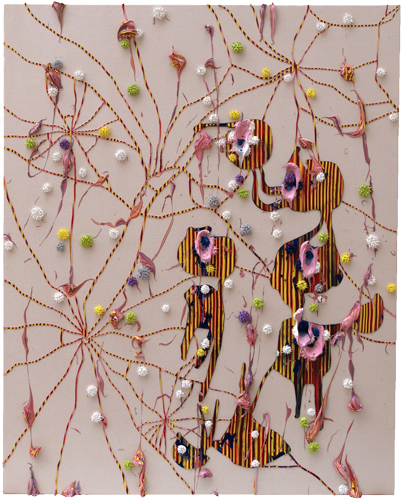
the slanted sunlight of my mind
2014
#464
150 x 120 cm
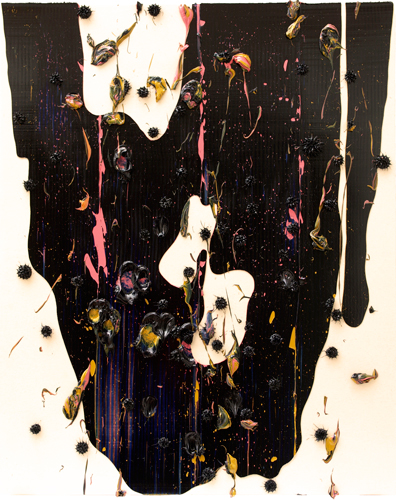
the aftermath
2014
#465
150x120cm
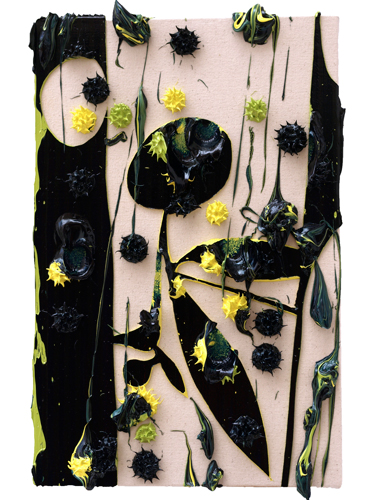
hard to say no
2014
#466
46x30cm
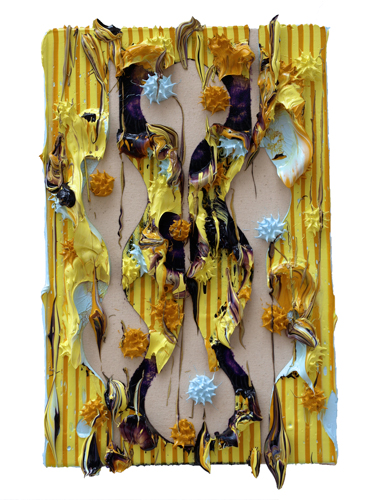
Making and Breaking
2014
#467
46x30cm
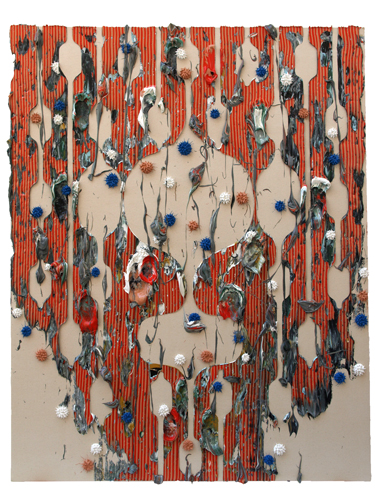
Too Stark Even So
2014
#468
150x120cm

Words Floated to Mind
2014
#469
110x100cm
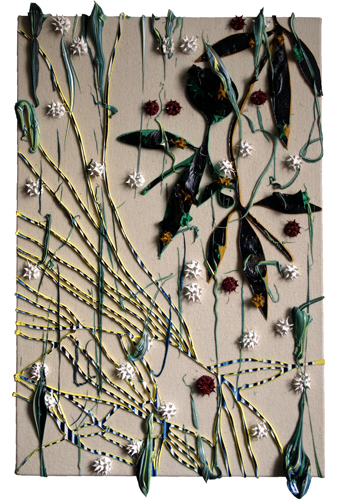
such crooked timber
2014
#470
18"x12"
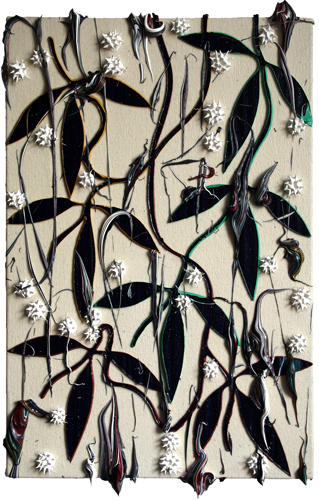
Forests Grew
2014
#472
18"x12"
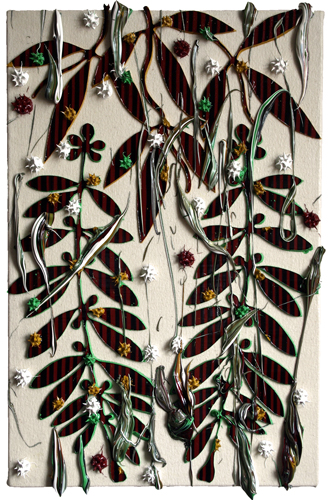
Volupté
2014
#473
18"x12"
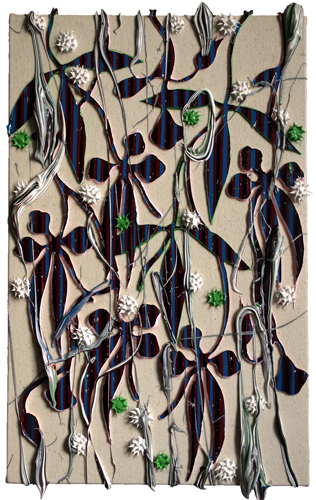
Something Other than the Obvious
2014
#474
18"x12"
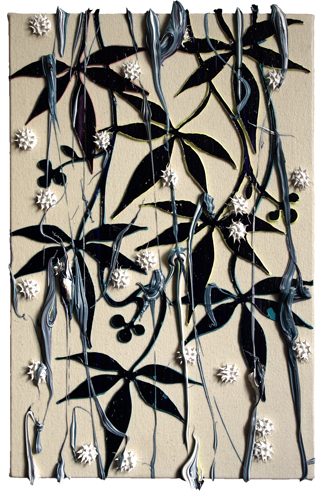
A Lingering Dream
2014
#475
18"x12"
Oil on Canvas over Panel
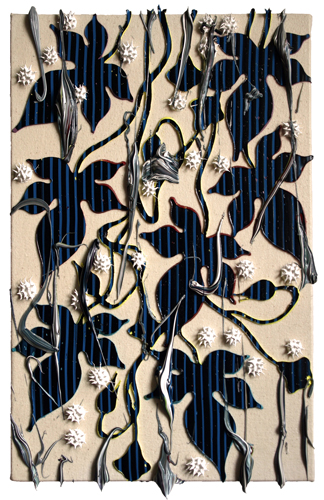
...When I see it, I'll tell you what I think.
2014
#476
18"x12"
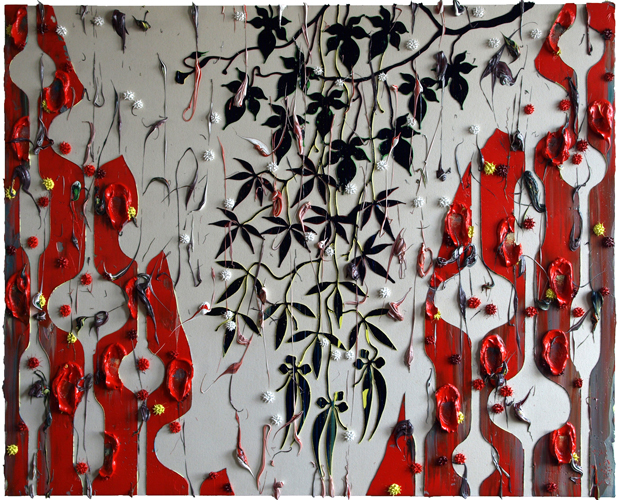
Does Painting Endure...?
2014
#477
Oil on Canvas over Wood Panel
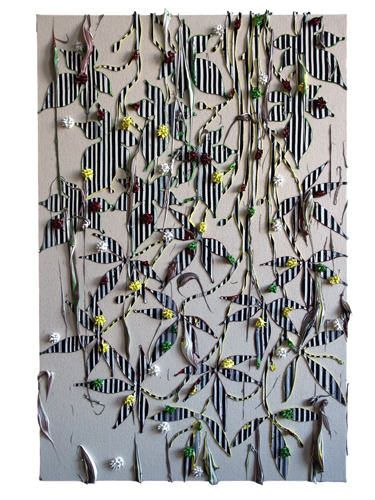
Overtones of the Multitude
2014
#478
30"x20"
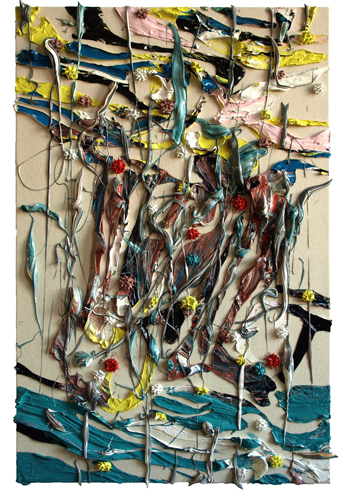
What if we are instead, algebraic?
2014
#480
30"x20"
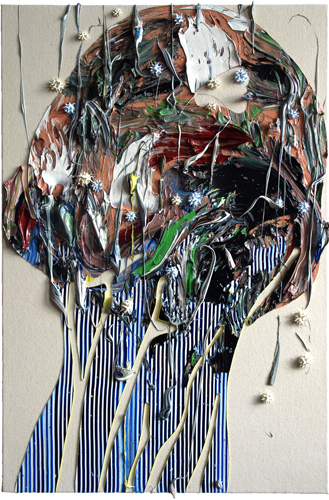
...Worlds & ...Mysteries
2014
#481
30"x20"
April 11, 2016
la abunancia

la abundancia
2016
#518
36"x32"
Oil on Canvas over Wood Panel
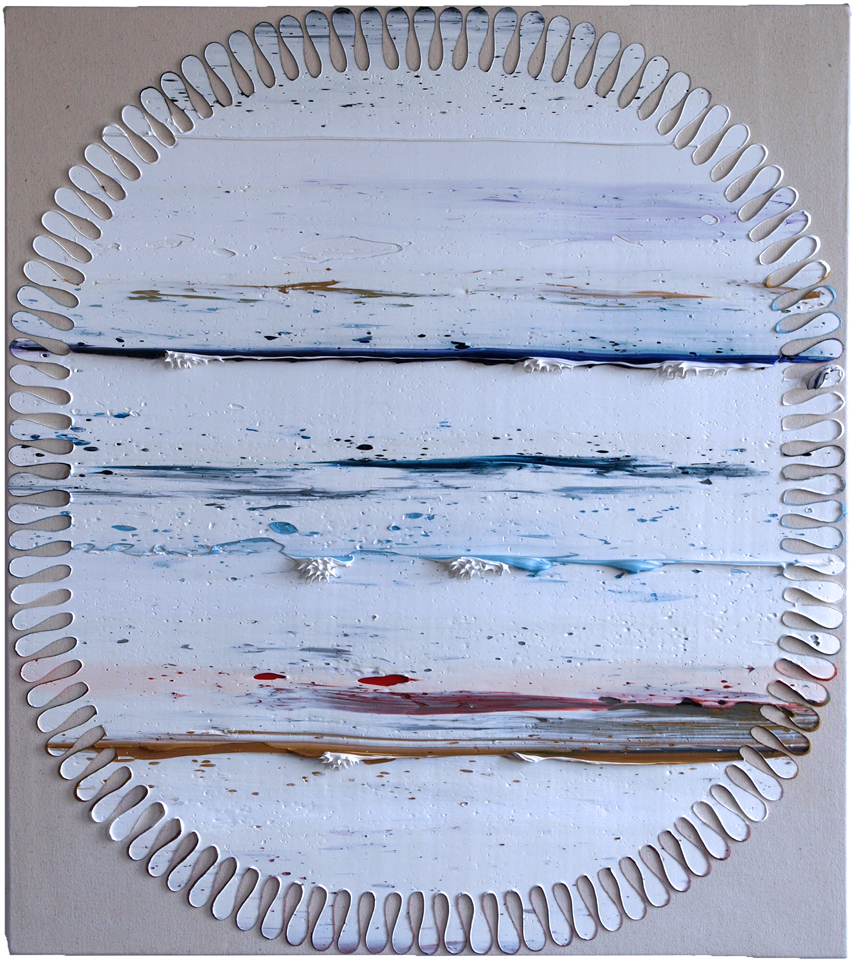
April 4, 2016
TRES POEMAS

Juan Bufill, Barcelona, Spain.
In 2011, Juan Bufill wrote three poems, thinking about three of my paintings. This was an enormous compliment, and I was thankful of course. I thought I would publish them in this blog today, in a new way, via animated gifs.
*
*
*
TRES POEMAS A PARTIR DE TRES PINTURAS DE DENNIS HOLLINGSWORTH
*
*
*

*
*
*
So What Cha Want
#387
122x98cm
2011
*
*
*

*
*
*
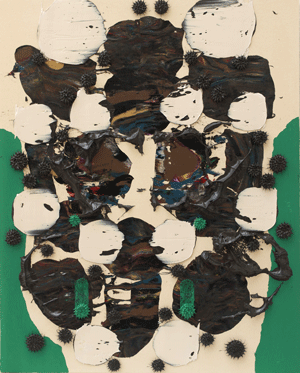
Dangerous. Wonderful.
#391
122x98 cm
2011
*
*
*

*
*
*
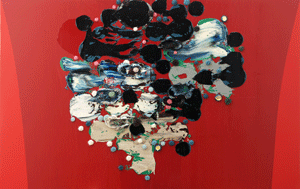
...the answer to everything...
#390
122x196 cm
2011
*
*
*
Second thoughts:
Below the fold, I will paste the text of Juan's original words. In trying to present poetry anew, I think I might have inadvertently tampered with Juan's intentions with form and rhythm. You can't see the words in their entirely, so overtones of textual music and meaning are lost. (But aren't they also lost when spoken aloud?) With the spacing, I substituted glimpses of the subject painting. Can the silence between words be truly represented by a glimpse? Also, the animated gifs are looped, so beginning and end are connect, the line erased. (This is why James Joyce looped Finnegan's Wake... I wonder how that would do in an animated gif?) But as we scroll down the page, the poems are encountered mid flight, we must wait until the title of the poem to see it in its' entirety.
Doubts aside, there are some new aspects to consider. I wonder if this is a beginning of a new poetic representational form?
Juan Bufill
TRES POEMAS A PARTIR DE TRES PINTURAS DE DENNIS HOLLINGSWORTHDE "SO WHAT CHA WANT", 2011
fragmentos de lo idéntico: distintosvislumbres como recuerdos
parecidos a lugares submarinos
vestigios de una riqueza
ahora espectral
y perdiéndose
y junto a ellos los cuerpos
blandos erizos de mar
brillantes como sexos de mujer
y junto a ellos vacío
espacio para una apertura
aparecido archipiélago
de seres nacidos quizá
para una oscura extrañezaun paisaje así antes no existía
los cuerpos fluir concentrado
fragmentos como momentos
baile a pesar de las heridas
fiesta del tacto colorDE "DANGEROUS. WONDERFUL", 2011
oscura tempestad
pero más tarde
islas afirmaciones
regiones de claridadcosas inestables son el fondo
de la estructura deseoDE "...THE ANSWER TO EVERYTHING...", 2011
la vida en el fondo, roja
y vaciada
y ritmada
en sólo tres zonas y tonos
para que surja algún centroy allí la desmentida: la abundancia
jardines de lo antes no existente
los cuerpos de la materia
la mezcla de los colores
convivencia de negrura y alegría
intensidad dividida
lugar para el sueño animal
sobre la vida vacío
roja
en el fondo
ritmada
